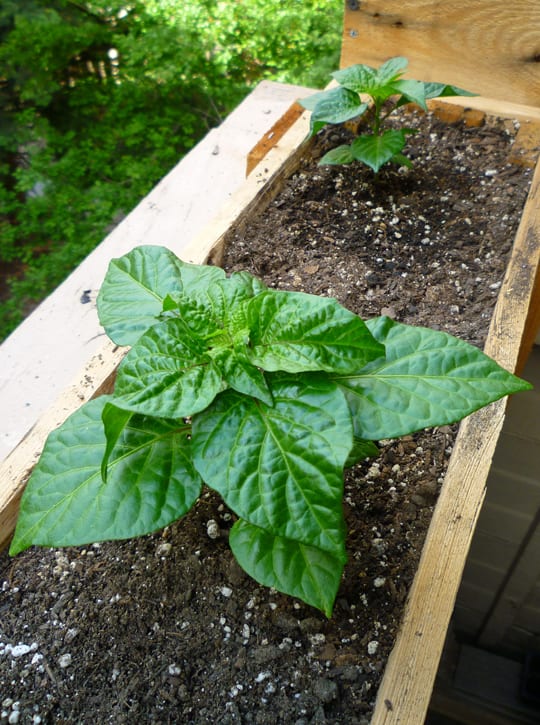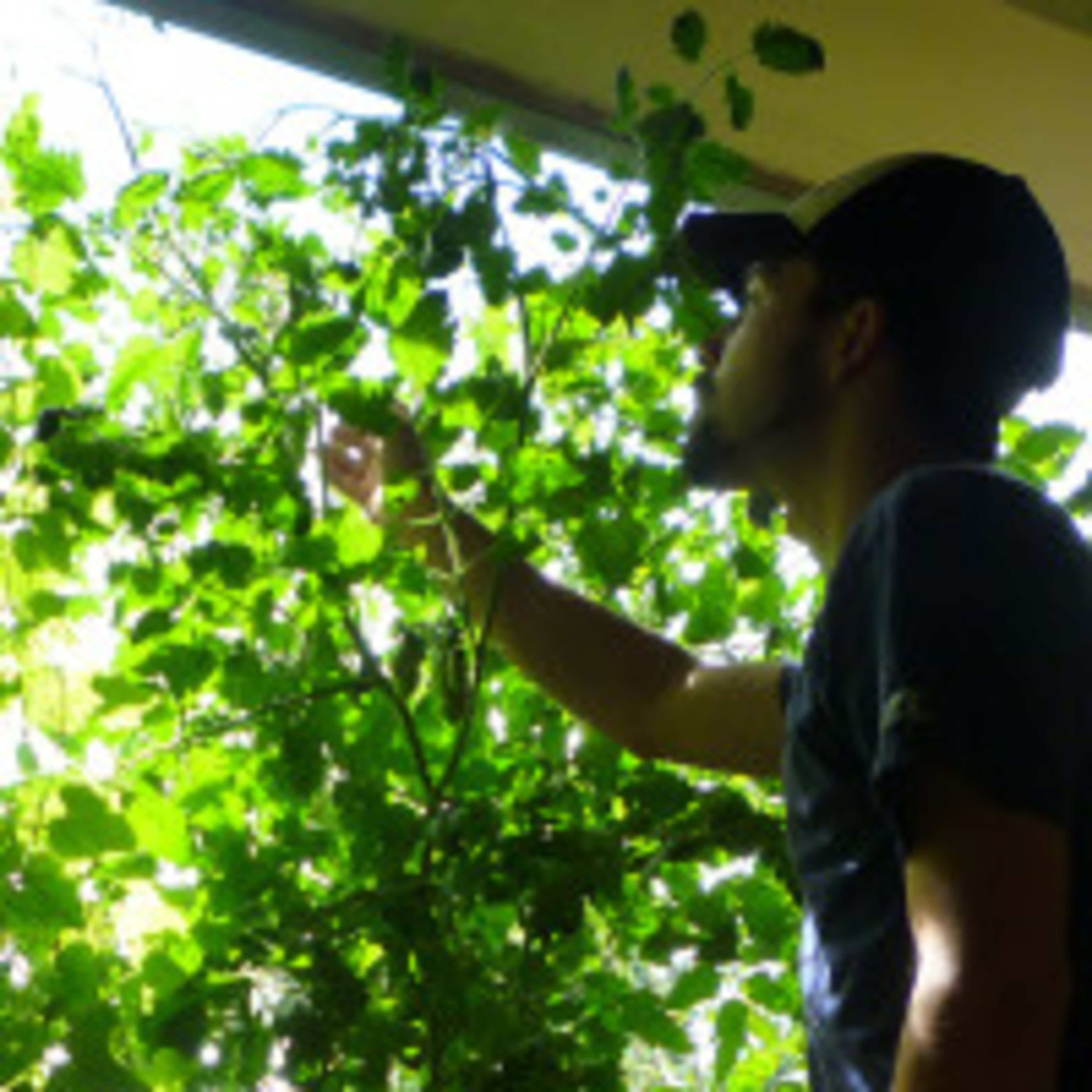How To Grow and Care for Pepper Plants
Peppers may not take first place when it comes to the most popular garden crop, but they’re always somewhere in the top 10! Their consistent popularity is well deserved too, as peppers offer great variety and a host of heat levels ranging from sweet to some serious heat!
Not only can you cultivate varieties that you’ll never see at a grocery store, but you can also grow them in containers on a sunny patio. Container gardening with peppers is one of the most rewarding aspects of my garden, and it can be in yours as well! Come learn how to care for pepper plants.
Plant Identification: Peppers
As far as we’ve been able to uncover, peppers have been cultivated for at least the last 5,000 years! While there are a few domesticated species of peppers, all of them belong to the Capsicum genus.
- Genus: Capsicum
- Common Species: C. annuum, C. baccatum, C. chinense, C. frutescens, & C. pubescens.
In case you’re wondering, the compound most commonly associated with intense spiciness found in peppers is called capsaicin. The hotter the chili pepper, the more concentrated the level of capsaicin. In order to organize peppers by heat level, the Scoville Unit system was created. The lower the ranking, the lower the heat.
Planting Pepper Seeds
While nurseries may be great places to pick up hardy crops and herbs, caution should be used when buying pepper transplants. Although it may be nice to bypass the seed and seedling stages altogether, the fact is that you have no idea how the transplant you’re going to buy was treated! Pepper plants, both hot and sweet varieties, are very sensitive to all sorts of environmental and controlled factors.
This is especially true in their early growth stages. Temperature swings, irregularity in watering, container size, and available nutrients are just a selected handful of influences that could potentially stunt or decrease yield potential in the matured plant. For these reasons, I always recommend starting from seed.
Featured Gallery
Top Picks for Heirloom Peppers
| Variety Name | Notes |
|---|---|
O’odham Pequin | Small prolific plants. Chillies are perfect for drying. |
Jalapeno | Classic hot pepper with many uses. |
Fatalii | Intense heat with equally intense citrus flavor. |
Sweet Banana | Sweet taste great for salads or pickling. |
Mini Yellow Bell | Small yellow bell peppers that are very sweet and easy to stuff! |
Planting Peppers
- Six to ten weeks before your average last frost date, you’ll want to begin sowing pepper seeds indoors. The seeds of peppers are notorious for slow germination and less-than-stellar initial growth rates.
- To plant pepper seeds, fill the desired amount of 3-inch diameter pots with fine potting soil or seedling mix. Plant 2-3 seeds in each container at a depth of 1/2 inch. Water the seeds well.
- Keep the containers in a warm area and make sure that the soil is consistently moist but not soggy or waterlogged. Pepper plants will germinate with great success when the soil temperature is 70°F or above. For this reason, utilize the warmth on the top of your refrigerator as an incubator!
- Within 7-14 days of consistent warmth and moisture, you should begin to observe the seeds sprouting.
- Once sprouted, immediately move the young seedlings to an area where they will be allowed a great deal of direct light. South-facing windowsills may be an option if sunlight is available from sunrise to sunset; otherwise, I’d recommend placing the seedlings under fluorescent lighting for 14-18 hours a day.

Young Pepper Plant Care and Transplanting
Depending on how early you started your pepper seeds, you may be caring for young plants for a month or a little longer before you’ll be able to move them outdoors and into their final location. While it may seem like a while, it’s a rather easy commitment to make. Keeping with the final step of seedling care, all you’ll really need to do is keep the soil moist and provide strong and continuous light. Beyond that, there are only a couple of things that need attention:
- If multiple seedlings sprouted in each container, thin them back to just the strongest plant. This can be done when the seedlings have reached a height of a couple of inches.
- Once the pepper seedlings have sprouted and grown two sets of true leaves, transplant them into a larger container. Shoot roughly for something that is double the size of your first container.
Hardening Off and Continued Plant Care
When the week of your average last frost rolls around, you may begin hardening off your pepper plants. Weather permitting that is! If there’s not any expected adverse weather, gradually introduce your pepper plants outdoors. Start off by placing the plants outdoors for a short time during the day, then return indoors. Gradually increase the amount of time spent outdoors over the next 7-14 days. After a one to two-week period, the pepper plants will be able to remain outdoors indefinitely. As far as continued plant care is concerned, covering the following tips will help ensure a bountiful harvest.
Featured Gallery
Container Size of at Least Two Gallons
Of course, bigger is better, but the minimum size container for one pepper plant should be two gallons. If you choose to grow in less, yields could be reduced.
Fertile and Well-Draining Soil
Pepper plants are heavy feeders that love moist soil. At the same time, soil with insufficient drainage may hold in too much water and cause a variety of plant complications that can lead to stunted growth, root rot or even plant death. For best results, plant your pepper plants in organic soil that has been amended with perlite.
Direct Full Sun
Maturing and fruiting pepper plants do not require as much light as their seedling stage but still need at least 8-12 hours of direct sunlight daily to sustain large harvests.
Temperatures Above 70°F
This is a fairly general temperature as far as peppers go, but it’s a good starting point. Although many peppers may be able to survive nighttime temperatures dipping below 70 degrees, you’ll find that some varieties run into issues with the cool temps and will drop their blossoms.
Featured Gallery
Fertilizing
Personally, I rely on the nutrients available in the soil for the first stage of the pepper’s life, but once blooms appear, the story changes. At the first sign of blooms, a weekly fertilizing regimen may need to be adopted. I feed an organic liquid nutrient at half-strength weekly throughout the flowering season. The fertilizer of choice should preferably have more phosphorus and potassium than nitrogen, as this greatly enhances fruiting.
Calcium
In soils that contain large portions of composted materials, calcium can become deficient. The lack of calcium can show up in your plants as crinkled-looking leaves or as blossom end rot. If this happens, sprinkling and watering powdered eggshells on the soil’s surface can relieve the deficiency a bit.
Happy Gardening!
If you stick tight to the above information and ensure the absolute best for your pepper plants, your hard work will be returned with loads of sweet or hot fruits! I appreciate you having a look through this guide to pepper plant care, and I wish you the best in your garden! Take care.
© 2014 Zach










